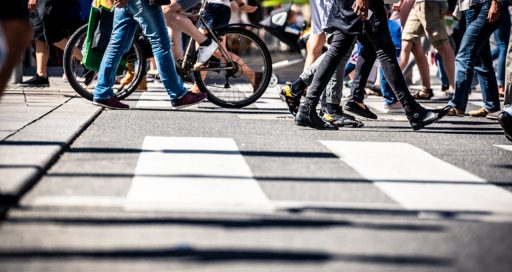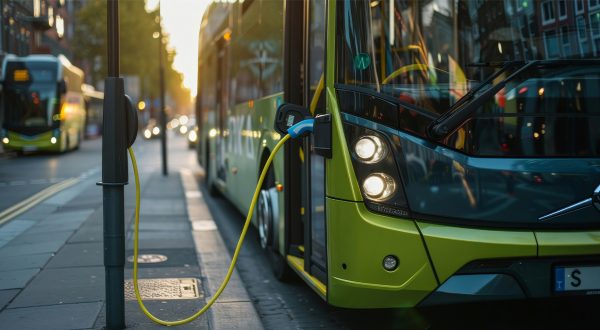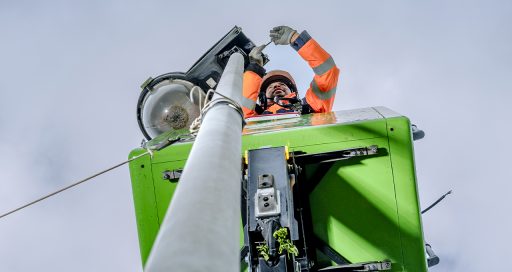As part of a project led by Leonard, more than 80 experts spent 12 months focused on the theme of the “shared street”. The result of this exploratory work alongside Citeos and Omexom is a comprehensive methodology guide, and a book of the same name published by Editions Apogée and aimed at regional planning professionals.

With 80 percent of French towns now exposed to one or more climate risks, in addition to demographic, social, health and technological vulnerabilities, the resilience of urban communities is increasingly becoming a systemic challenge that can only be addressed collectively through an alliance between residents and public and private stakeholders.
In this spirit of cooperation, in 2021, the French environmental transition agency (ADEME) launched a call for proposals on the subject of regional resilience, as part of an initiative that brings together experts to collectively produce open resources to help regional authorities develop a shared culture of innovation and action.
“The street is the ultimate communal asset”
One of the first projects selected was the “Shared Street” initiative undertaken by Richez Associés, Franck Boutté Consultants and Leonard, the VINCI Group’s future-oriented innovation platform, focused chiefly on drawing up standards for the design, real-world implementation and management of the resilient city.
“The street is the ultimate community asset,” says Etienne Bourdais, Development Director at Leonard, who led this project. “As such, it should be a safe, comfortable space for each and every person to use. But our streets were designed in line with 19th- and 20th-century thinking, often as spaces that are residual, functional and codified, rigidly organised around the road-pavement-parking triad in response to the growing influence of cars.”
A scholarly guide for hands-on implementation
So, how do we move away from this now-outdated vision? Over 12 months, more than 80 experts reflected, discussed and made suggestions with the aim of making city streets reflect the major issues of the 21st century. The result of this exploratory work, the methodology guide published in March 2023, offers service department and technical directors responsible for mobility, public spaces and road networks a method for diagnosing a street’s weaknesses and potential before proceeding to action to reorganise this public space, encourage experimentation to find new uses, and refresh our towns and cities. The book, published last November by Editions Apogée, makes this new vision of the city street available to all, city dwellers and professionals alike.
Lighting is key
Two participants in the project, the VINCI Energies expert brands Citeos and Omexom, contributed to the discussion on the collection and supply of data, electric vehicle charging points, traffic flow management and public lighting systems.
Lighting unquestionably plays a pivotal role in the design and implementation of the shared street. The function of street lights is not only to illuminate, but also to enable pedestrians, cyclists and drivers to travel safely, improve user well-being and comfort, and provide mounting points and interfaces for other urban solutions and street furniture.
Lighting in the shared street, with its focus on usage and energy efficiency, facilitates a number of applications: sensors to monitor mobility flows, pollution, noise levels, numbers of pedestrians, and the presence of animals (especially bats, to adapt lighting in response to animal and plant biodiversity). A mass of smart sensors, monitored remotely at the lamp post or cabinet, makes it possible to analyse lighting functions and system data (bulbs, drivers, controllers, etc.) to identify faults, measure energy consumption and manage the whole system.
Social engineering
As a long-time partner to local authorities in installing public lighting systems, Citeos was a strong voice in the discussion thanks to its expertise in low-carbon equipment and solutions.
“Lighting represents 40 percent of annual electricity consumption and expenditure for a medium-sized town,” explains Khadija Tighanimine, sociologist and Project Manager Territories at Omexom. “While regional elected officials and decision-makers understand perfectly the need for energy efficiency, it does require complex technologies, economic decisions, and analysis of the uses of existing architectural features. This includes user discussion workshops, regional analysis, user itineraries, night-time walks and citizen applications. In short, social engineering is a valuable complement to technical engineering.”
01/18/2024
Learn more:
editions-apogee.com





